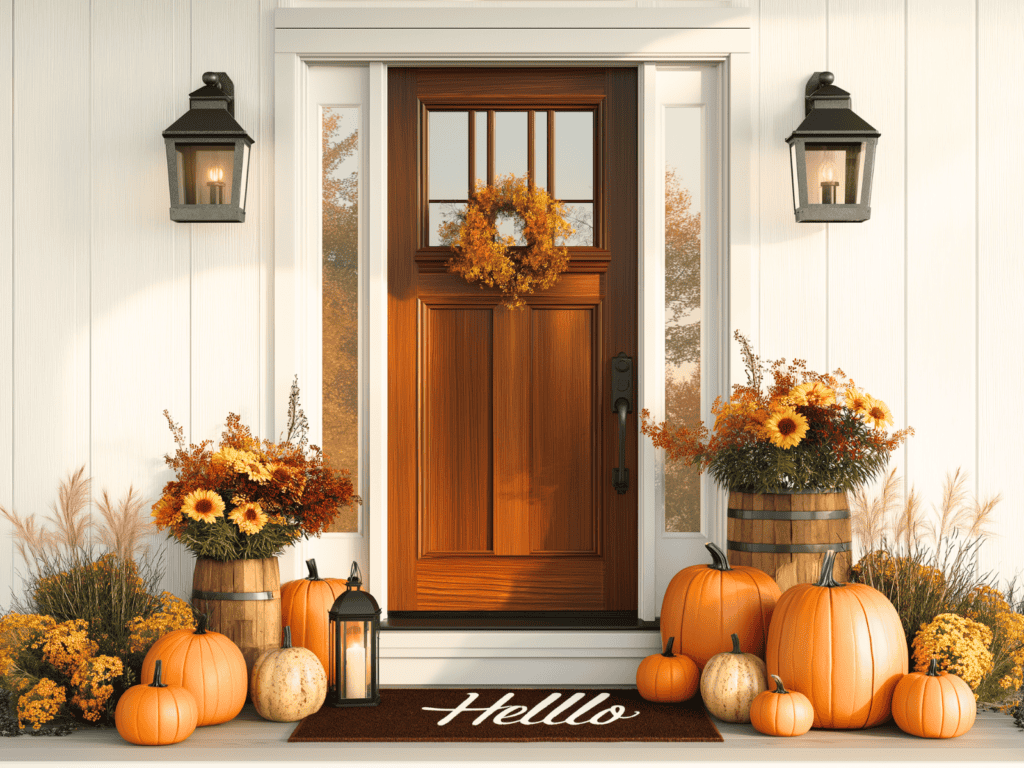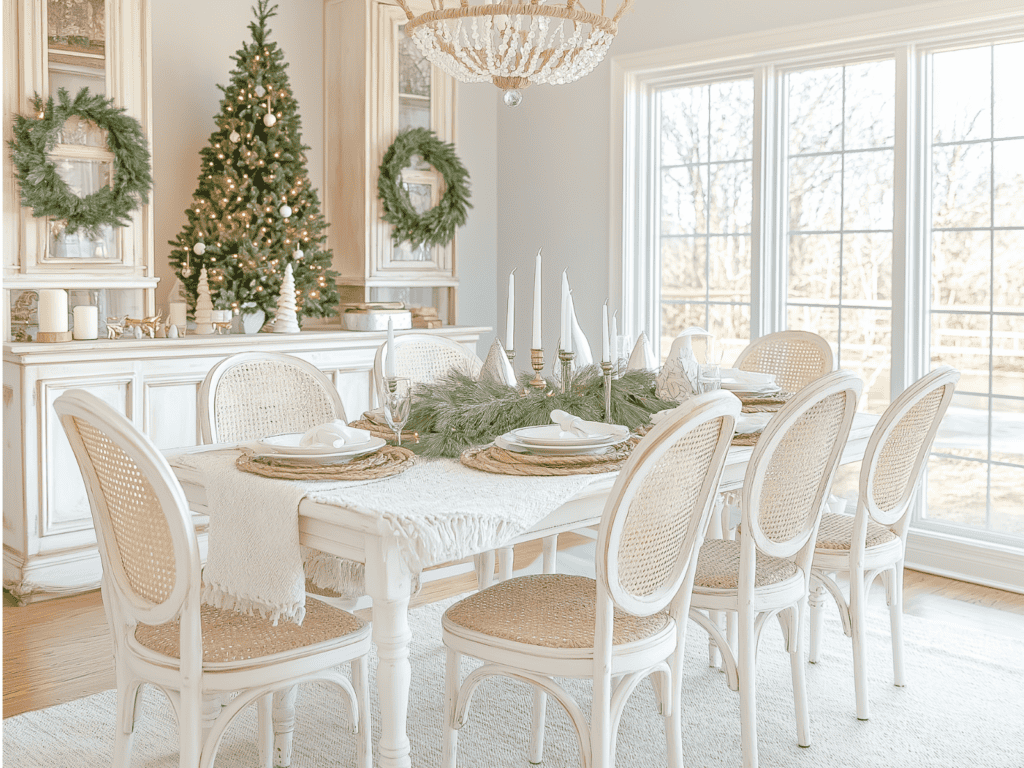Seasonal Decluttering: How to Refresh Your Home Each Season
I’ll admit it – I’m that person who gets excited about new storage containers. The one who finds joy in a perfectly organized pantry and feels a sense of deep satisfaction when everything has its place. But even as someone who lives and breathes organization, I’ve learned that the most effective decluttering isn’t about marathon cleaning sessions – it’s about creating a sustainable rhythm that flows with the seasons.
Seasonal decluttering combines my passion for organization with the natural rhythm of the year, turning what could be an overwhelming task into something that feels almost magical. There’s nothing quite like the satisfaction of transitioning your home from one season to the next, greeting each new chapter with intention and purpose. Let me show you how to transform your home organization into something you actually look forward to.
Setting Up Your System

The key to successful seasonal decluttering lies in how you set up your storage system. After years of refining my approach, I’ve found that the seasonal box method is the most effective way to keep everything organized and accessible.
Choose Your Storage Containers
Start with clear, weatherproof storage bins – one set for each season. I prefer clear bins because they allow me to see the contents at a glance, saving precious time when searching for specific items. While these bins might seem like an investment, they’ll protect your belongings and last for years.
Create a Labeling System
Labeling is crucial. Create a simple, consistent labeling system that works for you. I use large, waterproof labels with both the season and contents listed: “SPRING – Easter Decorations” or “WINTER – Holiday Lights.” Always label multiple sides of each box, including the top, so you can identify contents regardless of how the boxes are stacked.
Designate Storage Areas
Choose a dedicated storage space in your basement, attic, or garage. Organize boxes by season, keeping the current and upcoming season’s boxes most accessible. I recommend designating specific zones or shelving units for each season so you always know exactly where to find what you need.
Maintain an Inventory
Finally, maintain a digital inventory checklist for each season’s boxes. A simple spreadsheet works perfectly – list each box’s contents and update it whenever you add or remove items. This step might seem excessive, but trust me: you’ll thank yourself when you need to find those specific Thanksgiving placemats or summer beach towels months later.
Pro tip: Keep a few empty boxes on hand for each season. As you discover new seasonal items throughout the year, you’ll have space ready to store them properly instead of creating random piles that lead to clutter.
Spring (March-May)

As nature awakens from its winter slumber, your home deserves the same fresh start. Spring is the perfect time to transition from cozy winter spaces to light, airy rooms that welcome the new season.
Winter Clothing Storage
Begin by assessing your winter wardrobe. Clean all winter coats, boots, and accessories before storing – this step is crucial to prevent any unpleasant surprises next winter. Roll heavy sweaters instead of folding them to prevent creases. Store boots with boot shapers or stuff them with acid-free paper to maintain their shape.
Deep Cleaning Post-Winter
Winter leaves behind a surprising amount of debris. Focus on often-neglected areas: baseboards that have collected dust from heat vents, corners where holiday decorations sat, and entryway areas that have endured months of winter boots. Pay special attention to your mudroom or entryway – these spaces need extra care after months of salt, snow, and slush.
Window and Screen Cleaning
Clear windows make a dramatic difference in how fresh your home feels. Remove and clean all window screens (I like to do this in the bathtub with mild soap and water). Wash both sides of your windows, and don’t forget the windowsills and tracks – they collect more winter grime than you might expect.
Spring Decor Transition

If you celebrate Easter, this is your moment to shine. But keep it sophisticated – think beautiful and tasteful pastel accents. The key is to choose pieces that can transition easily into general spring decor after the holiday.
Spring Botanicals
Bring the outside in with fresh or high-quality faux botanicals. Place flowering branches in tall vases, create simple arrangements with seasonal blooms or add potted herbs to your kitchen windowsill. I love using pussy willows and cherry blossoms – they last longer than fresh flowers and add height to any space.
Light, Airy Textiles
Pack away heavy winter drapes and blankets. Replace them with lighter versions in natural fabrics like linen or cotton. Switch to lighter throw pillows in spring colors or patterns, and consider adding sheer curtain panels to let in more natural light. Even changing your shower curtain to a lighter color can make your bathroom feel more spring-like.
Summer (June-August)

Summer brings endless opportunities for outdoor living and entertaining. This season is all about creating flow between your indoor and outdoor spaces while keeping your home feeling cool and inviting.
Outdoor Space Organization
Transform your outdoor areas into additional living spaces. Clean and organize your patio furniture, checking for any repairs needed after winter storage. Create zones for different activities – dining, lounging, and perhaps a play area. Store outdoor cushions in a weatherproof container nearby for easy access, and keep throws in a basket for chilly evenings.
Summer Entertainment Prep
Organize your entertainment supplies with easy access in mind. Set up a dedicated area for outdoor dining essentials. Create grab-and-go stations for pool supplies, outdoor games, and picnic essentials. I keep a “summer hosting” box with frisbees, footballs, and playing cards ready for impromptu gatherings.
Garage Cleanout
Summer is the perfect time to tackle the garage. Start by creating distinct zones: garden tools, sports equipment, and automotive supplies. Install wall-mounted storage systems to maximize vertical space. Don’t forget to organize warm-weather gear like bikes, garden tools, and camping equipment so they’re easily accessible during peak usage months.
Summer Decor Transition

Embrace patriotic decor that can span from Memorial Day through Independence Day. Choose versatile pieces that feel sophisticated – think vintage American flags, blue and white pottery, and red-striped pillows. Store these items together in a clearly labeled box for easy rotation between holidays.
Summer Fruits and Botanicals
Bring summer’s bounty indoors with fruit-themed decor and botanical elements. Fill glass hurricanes with lemons or limes for an instant centerpiece. Display fresh herbs in the kitchen, and add tropical plants to living spaces. I love using palm fronds in oversized vases for an instant summer vibe.
Light Textiles and Summer Linens
Switch to lightweight textiles throughout your home. Replace heavy bedding with crisp cotton sheets and light quilts. Update throw pillows with coastal-inspired patterns or tropical prints. In the bathroom, hang lightweight towels that dry quickly in summer humidity. Don’t forget to rotate in summer-weight tablecloths and napkins for outdoor dining.
Pro tip: Create an “emergency summer kit” with extra sunscreen, insect repellent, and basic first aid supplies. Store it with your summer entertaining supplies so you’re always prepared for unexpected guests or outdoor activities.
Fall (September-November)

Fall is a season of transition, and your home should reflect this shift from summer’s casual living to more structured, cozy spaces. It’s also the perfect time to get organized before the busy holiday season arrives.
Summer Gear Storage
Before storing summer items, take time to assess their condition. Clean and repair patio furniture before covering or storing it. Wash all outdoor cushions and summer linens – this extra step prevents mildew and protects your investment. Pool toys, beach equipment, and garden tools should be thoroughly cleaned and dried before storing in weatherproof containers.
Back-to-School Organization
Create designated spaces for school-related activities. Set up a homework station with the necessary supplies. Install hooks for backpacks and an inbox system for school papers. I recommend creating a “command center” with a family calendar, important documents, and a spot for permission slips. This helps maintain order during busy school mornings.
Holiday Prep Storage
Get ahead of the holiday rush by organizing your storage spaces now. Sort through Halloween and Thanksgiving decorations, noting any items that need replacement. Create an inventory of gift-wrapping supplies, and set up a dedicated area for holiday prep. This is also the perfect time to clear space for incoming holiday gifts.
Fall Decor Transition

Embrace autumn’s natural elements. Arrange real or faux pumpkins in varying sizes and colors – white and sage green options offer a sophisticated take on traditional orange. Layer in wheat sheaves, dried corn husks, and autumn leaves. Keep the look elevated by choosing a consistent color palette.
Halloween Decorations
Take a curated approach to Halloween decor. Choose pieces that complement your existing fall theme rather than competing with it. I prefer vintage-inspired pieces and natural elements over plastic decorations. Store Halloween items in clearly labeled bins separate from general fall decor for easy rotation.
Thanksgiving Setup
Plan your Thanksgiving decor early. Create a box dedicated to Thanksgiving essentials – table linens, special serving pieces, and seasonal decor. Check your inventory of place settings, serving utensils, and table decorations.
Pro tip: Create a “fall activities” box with supplies for seasonal traditions like pumpkin carving tools, leaf-pressing materials, and autumn crafts. This keeps seasonal activities organized and ready when the moment strikes.
Winter (December-February)

Winter transforms our homes into cozy sanctuaries from the cold. This season requires careful organization as we manage holiday decorations while creating warm, inviting spaces for indoor living.
Holiday Decoration Management
Approach holiday decorating systematically. Unpack Christmas decorations in order: tree ornaments, indoor decor, outdoor lights, and finally, gift-wrapping supplies. Test all light strands before hanging, and keep a “repairs needed” box for broken items. When the season ends, pack decorations using the reverse order, labeling boxes clearly with contents and any special instructions.
Indoor Storage Solutions
Winter means spending more time indoors with more stuff. Create smart storage solutions for winter essentials like extra blankets, board games, and indoor activities. Maximize closet space with over-door organizers and shelf dividers. Install hooks for coats and scarves near entryways to prevent clutter buildup.
Year-End Reset
Use this time to evaluate your organizational systems from the past year. Clear out paperwork, update files, and organize digital photos. Deep clean areas that see heavy winter use, like the mudroom and kitchen. I always do a complete pantry reset in January – it’s the perfect time to clear holiday leftovers and reorganize for the new year.
Winter Decor Transition

Start with a plan for your holiday decor. Choose a cohesive color scheme and style that complements your home’s existing design. I recommend creating zones for different types of decorations: mantel displays, tabletop vignettes, and tree ornaments. When packing away, photograph your favorite arrangements to reference next year.
Winter Themes (January)
After Christmas, transition to elegant winter decor that can last through February. Think sparkling white lights, silver and gold accents, and natural elements like pinecones and birch branches. Create cozy vignettes with white candles, soft textiles, and metallic finishes. This creates a sophisticated winter wonderland that doesn’t feel holiday-specific.
Valentine’s Day Prep
Keep Valentine’s Day decor subtle and sweet. Incorporate soft pinks and deep reds through small touches like throw pillows and fresh flowers. Store Valentine’s items in a dedicated box that’s easily accessible after Christmas decorations are packed away. I love using glass and metallic accents that transition well from winter to Valentine’s Day.
Final Thoughts

Here’s a little secret: sometimes, I still get a thrill when I open my perfectly organized seasonal boxes. There’s just something magical about unwrapping treasured decorations and giving your home a fresh start four times a year. And yes, I’m that person who does a little happy dance when I find the perfect storage container (no judgment, please!).
Remember, seasonal decluttering isn’t about achieving perfection – it’s about creating a home that flows with the natural rhythm of your life. Whether you’re a storage bin enthusiast like me or just someone looking to bring a little more order to your space, this system can be adapted to work for you. Now if you’ll excuse me, I need to go label something…
More Ways to Get Started with Seasonal Decluttering:

- Join our organizer’s community by signing up for weekly email decluttering tips and inspiration.
- Take action today with our popular 30-Day Declutter Challenge – perfect for jumpstarting your organization journey.
- Ready for a bigger challenge? Join thousands who’ve transformed their homes with our 100 Things to Declutter Challenge.
- Download our comprehensive Room-by-Room Decluttering Guide to methodically tackle every space in your home.
- Get organized for success with our curated list of Best Planners for Home Organization – tested and recommended by our community.
Pro tip: Start with just one small area or challenge. Even organizer enthusiasts like myself began with a single drawer or closet. The key is to begin somewhere and build momentum naturally.







